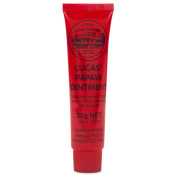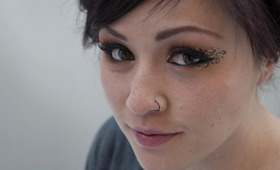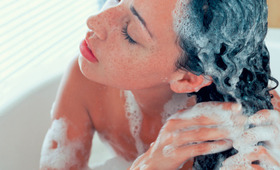
Shelter-in-place restrictions may be loosening up in some areas, but the CDC still recommends wearing a face covering if you leave home to help curb the spread of COVID-19. Unfortunately—as many medical professionals and essential workers already know—wearing masks can wreak havoc on your skin. Whether you sew your own mask, buy one online or go the DIY route with a bandana and hair-ties, keeping your nose and mouth covered can come with some unfortunate side effects: chafing, irritation, redness, even bruising or breakouts in some cases. We rounded up some tips for taking care of your skin when you’re wearing a protective mask.
Choose a cotton face mask
Unless you’re a healthcare worker on the front lines, the CDC recommends wearing cloth face coverings (save the N95 and surgical masks for those who really need them). Face masks made from tightly woven cotton instead of synthetic fabric are soft, breathable and less likely to rub against your skin and cause rash and irritation. An added option: look for a mask with an internal pocket so that you can slip an additional filter (like a coffee filter) inside for extra protection.
Wash your face (and your mask) often
A properly fitted face mask should come in direct contact with your skin, making it the perfect place for sweat, dirt, and oil to build up. That’s why it’s important to wash your face with a gentle, pH-balanced cleanser before and after putting on your mask. If you’re using a homemade cloth face mask, you should wash it regularly, as it may be absorbing your skin’s natural oils. (Fabric softeners and scented detergents can be irritating, so consider skipping them when laundering.)
Protect skin from friction
If your mask is rubbing your skin raw, use an ointment or salve to protect sensitive areas from friction and chafing. Regular old Vaseline or Aquaphor will work (we also love Lucas' Papaw Ointment), but if you want to upgrade, choose an occlusive balm with skin-healing ingredients like Chemist Confessions Balm Voyage. And for those (heroes) who need to wear N95 masks, keep hydrocolloid bandages handy. They protect cuts and abrasions from tight-fitting N95 masks and will help the wounds heal.
If you’re breaking out, skip makeup
Face masks create a warm, humid environment for your skin that can affect sebum production and lead to clogged pores and breakouts. If you’re noticing acne around your nose, mouth, and chin, try minimizing the makeup you wear underneath your mask—especially foundation and concealer. Anything above the mask, of course, is fair game.
Treat breakouts with TLC
It can be tempting to bring out the big guns when a whitehead pops up, but maintaining a healthy skin barrier is especially important during these times. Skip harsh acne treatments and opt for soothing ingredients to calm redness and irritation. Salicylic acid is a good choice for its ability to penetrate into clogged pores and reduce inflammation. Protect active zits under your mask with acne patches—no one will see them, anyway!
















